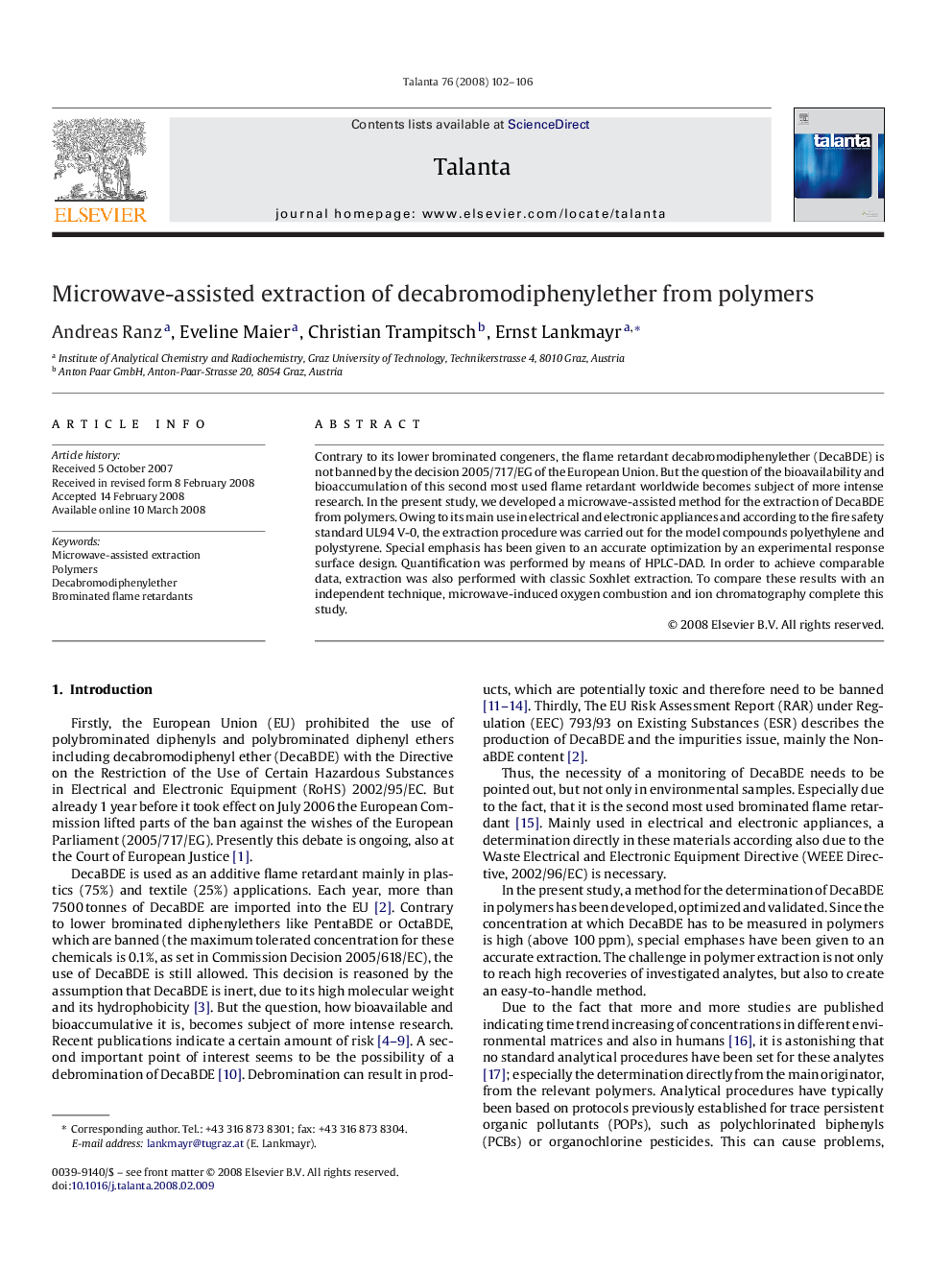| Article ID | Journal | Published Year | Pages | File Type |
|---|---|---|---|---|
| 1243968 | Talanta | 2008 | 5 Pages |
Contrary to its lower brominated congeners, the flame retardant decabromodiphenylether (DecaBDE) is not banned by the decision 2005/717/EG of the European Union. But the question of the bioavailability and bioaccumulation of this second most used flame retardant worldwide becomes subject of more intense research. In the present study, we developed a microwave-assisted method for the extraction of DecaBDE from polymers. Owing to its main use in electrical and electronic appliances and according to the fire safety standard UL94 V-0, the extraction procedure was carried out for the model compounds polyethylene and polystyrene. Special emphasis has been given to an accurate optimization by an experimental response surface design. Quantification was performed by means of HPLC-DAD. In order to achieve comparable data, extraction was also performed with classic Soxhlet extraction. To compare these results with an independent technique, microwave-induced oxygen combustion and ion chromatography complete this study.
